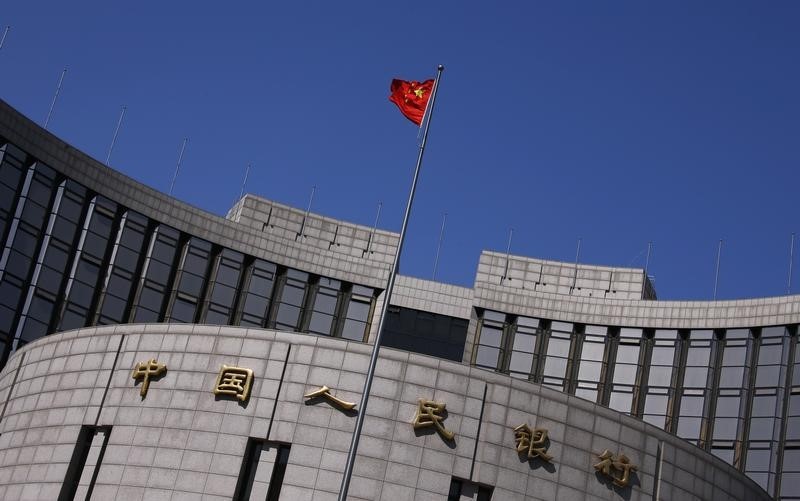BEIJING (Reuters) - China's central bank on Sunday cut the amount of cash that banks must hold as reserves, the second industry-wide cut in two months, adding more liquidity to the world's second-biggest economy to help spur bank lending and combat slowing growth.
The People's Bank of China (PBOC) lowered the reserve requirement ratio (RRR) for all banks by 100 basis points to 18.5 percent, effective from April 20, the central bank said in a statement on its website www.pbc.gov.cn.
"Though the growth in the first quarter met the official target of around 7 percent for 2015, the slowdown in several areas, including industrial output and retail sales, has caused concern," said a report published by the official Xinhua news service covering the announcement.
The latest cut, the deepest single reduction since the depth of the global crisis in 2008, shows how the central bank is stepping up efforts to ward off a sharp slowdown in the economy.
"The size of the cut is more than expected," said Shenwan Hongyuan Securities analyst Chen Kang.
"It's going to release around a trillion yuan (in liquidity) at least."
Weighed down by a property downturn, factory overcapacity and local debt, growth is expected to slow to a quarter-century low of around 7 percent this year from 7.4 percent in 2014, even with expected additional stimulus measures.
However, the last RRR cut was seen as more defensive by some economists, as it served primarily to offset increasing capital outflows that were exerting a drain on the money supply, making it difficult to guide real lending rates down.
Indeed, Chinese bankers have proven resistant to extending more credit, saying they are also under orders to maintain profitability and reduce the amount of bad loans on their books, but their intransigence appears to have frustrated Beijing.
Premier Li Keqiang publicly exhorted banks to lend more to the real economy during a visit to major banks on Friday.
AGGRESSIVE SIGNAL
On the corporate side, executives say they are wary of embarking on fresh investments, given weak demand and weakening producer pricing power.
As a result think-tanks and advisers to the government are polarizing into those calling for more stimulus to arrest the slowdown and a rival camp emphasizing structural reforms as the route to sustainable growth.
"The amplitude of the reduction reflects a more aggressive policy signal," said Xie Yaxuan, macroeconomics research director at China Merchants Securities.
"The reduction should help make up for the negative growth of foreign exchange in the first quarter, which created a hole in the monetary base," he said.
The central bank also announced targeted RRR cuts; an additional 100 bps cut for rural credit cooperatives and village banks, as well as a 200 basis point cut for the China Agricultural Development Bank, one of China's major policy lenders.
The PBOC last cut the RRR for all commercial banks by 50 basis points on Feb. 4, the first industry-wide cut since May 2012.
The central bank has also cut interest rates twice since November in a bid to lower borrowing costs and spur demand, but while short-term money rates have come down in recent weeks, long-term lending to the real economy has not shown much sign of reaction.
"Real interest rates are extremely high, and they are also quite high relative to returns," said Arthur Kroeber, head of research at Gavekal Dragonomics.
"RRR has been at twenty percent for a long time, and that has created room for it to go down further."

(This story corrects the spelling of Gavekal Dragonomics in the penultimate paragraph)